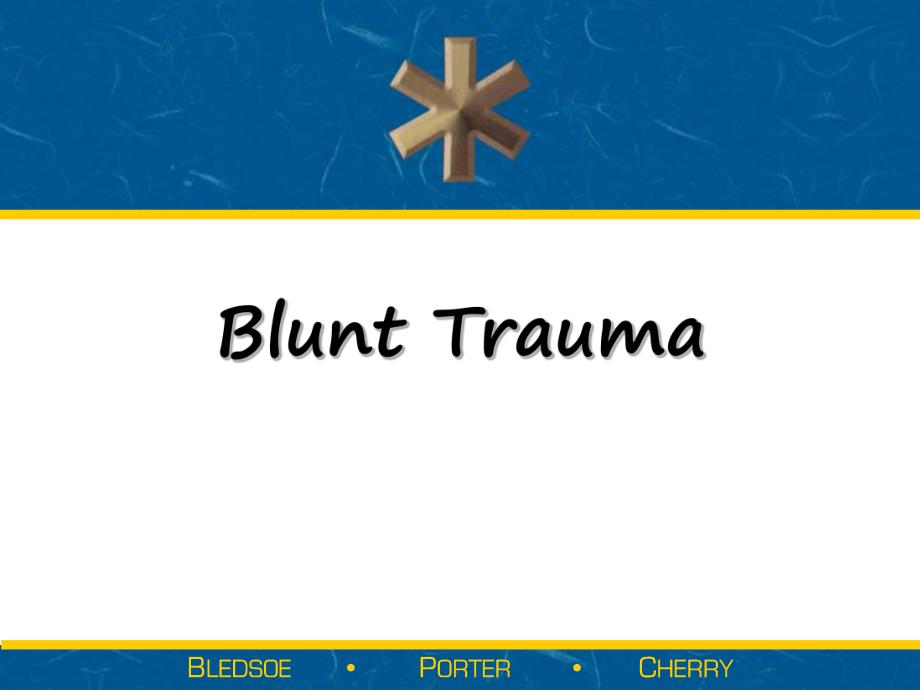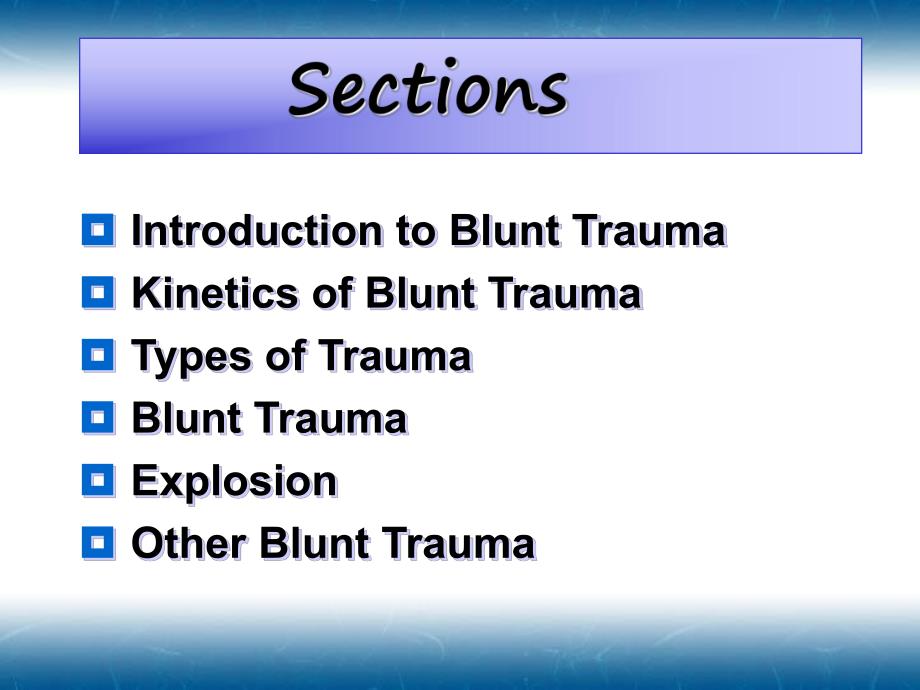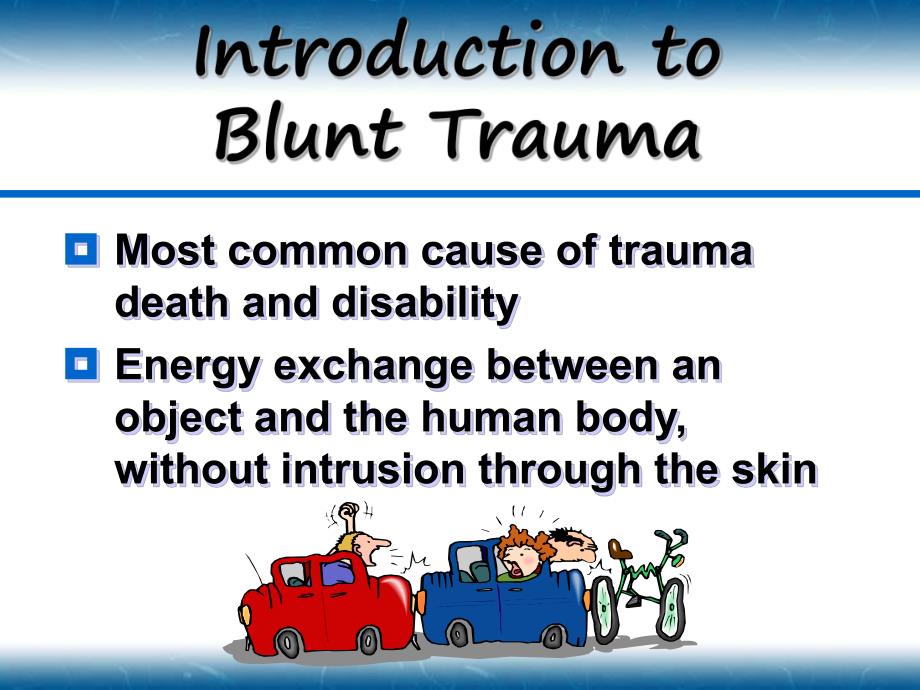 Blunt Trauma.ppt
Blunt Trauma.ppt
《Blunt Trauma.ppt》由会员分享,可在线阅读,更多相关《Blunt Trauma.ppt(53页珍藏版)》请在优知文库上搜索。
1、 Introduction to Blunt Trauma Kinetics of Blunt Trauma Types of Trauma Blunt Trauma Explosion Other Blunt Trauma Most common cause of trauma death and disability Energy exchange between an object and the human body,without intrusion through the skin Process of examining the scene to determine potent
2、ial injuries that result from the forces of motion Mechanism of injury description of the mechanical and physiological changes that result in anatomical or functional damage of tissue Based on the MOI and kinetics predict expected injuries Inertia“A body in motion will remain in motion unless acted
3、upon by an outside force.”“A body at rest will remain at rest unless acted upon by an outside force.”Conservation of Energy“Energy can neither be created nor destroyed.It is only changed from one form to another.”Kinetic versus Potential Energy Kinetic Energy Energy in Motion Double Weight=Double En
4、ergy Double Speed=Quadruple EnergySPEED IS THE GREATESTDETERMINANT2)()(2speedVelocityweightMassKE Force Emphasizes the importance of rate at which an object changes speed(acceleration or deceleration)onAcceleratiMassForce Blunt Closed injury Indirect injury to underlying structures Transmission of e
5、nergy into the body Tearing of muscle,vessels and bone Rupture of solid organs Organ injury Ligamentum teres Penetrating Open injury Direct injury to underlying structures 44,000 people die each year on US highways Events of Impact Vehicle Collision Body Collision Organ Collision Secondary Collision
6、s Objects inside vehicle strike occupant Additional Injuries Vehicle receives a second impact Restraints Seatbelts Occupant slows with the vehicle Shoulder and Lap belts MUST be worn together Injuries if worn separately Airbags(SRS)Reduce blunt chest trauma Cause:Hand,Forearm,&Facial Injury Check fo
7、r steering wheel deformity Side Airbags Child Safety Seats Infants and Small Children:Rear facing Older Child:Forward facing Types of Impact Frontal:32%Lateral:15%Rotational:38%Left&Right Front&Rear Rear-end:9%Rollover:6%Frontal Impact Down-and-Under Knee,femur,and hip fracture Chest trauma-Steering
8、 Wheel Paper Bag Syndrome Up-and-Over Tenses legs=Bilateral femur fracture Hollow organ rupture and liver laceration Similar chest trauma Axial Loading Ejection Due to up-and-over pathway Contact with the vehicle&external object Lateral Impact 15%of MVCs but 22%of deaths Upper extremity injury Rib,c



- 配套讲稿:
如PPT文件的首页显示word图标,表示该PPT已包含配套word讲稿。双击word图标可打开word文档。
- 特殊限制:
部分文档作品中含有的国旗、国徽等图片,仅作为作品整体效果示例展示,禁止商用。设计者仅对作品中独创性部分享有著作权。
- 关 键 词:
- Blunt Trauma
 优知文库所有资源均是用户自行上传分享,仅供网友学习交流,未经上传用户书面授权,请勿作他用。
优知文库所有资源均是用户自行上传分享,仅供网友学习交流,未经上传用户书面授权,请勿作他用。


 2022自身免疫性肝炎的管理JSH临床实践指南主要内容.docx
2022自身免疫性肝炎的管理JSH临床实践指南主要内容.docx
